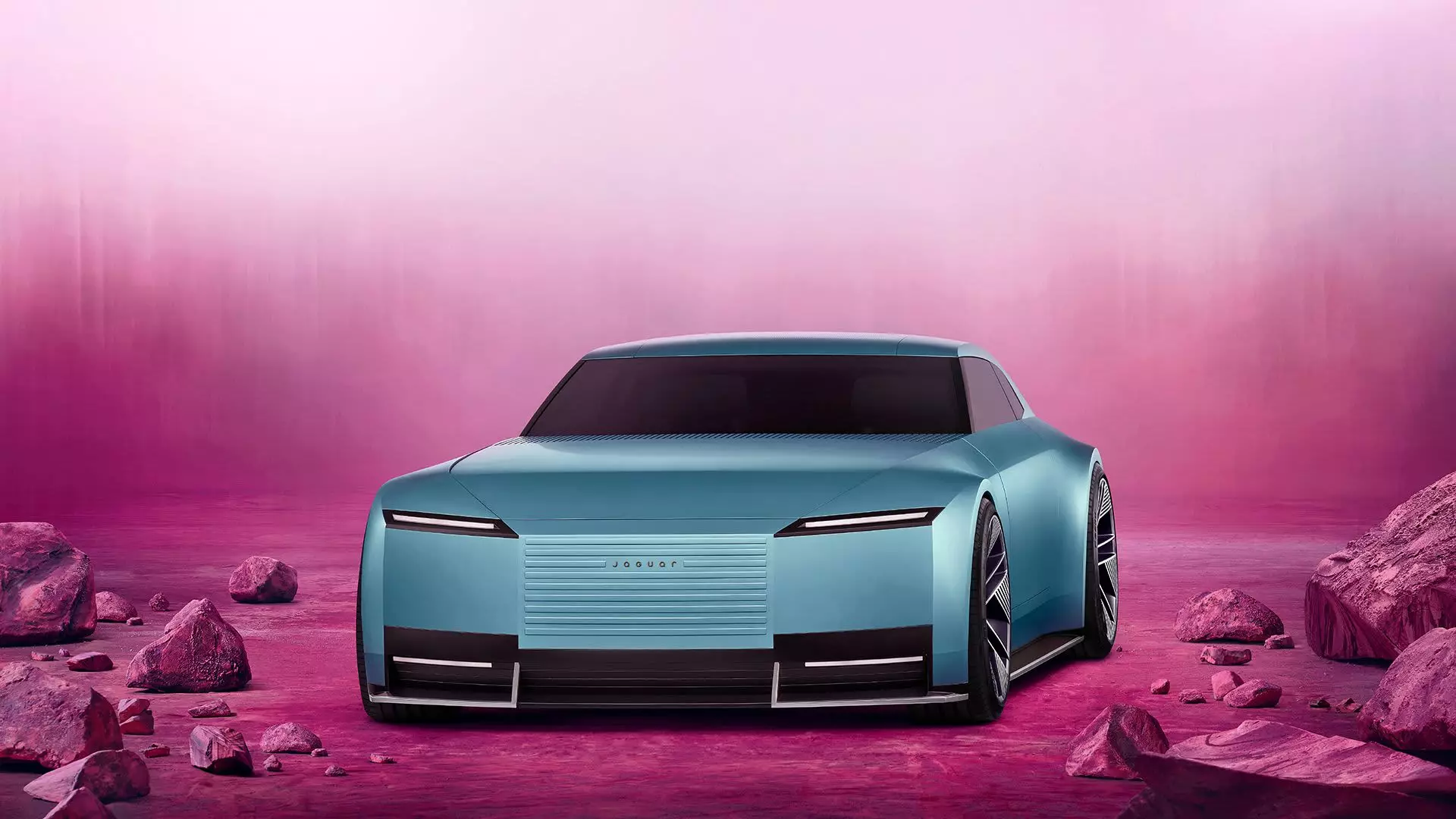Jaguar, the illustrious British car manufacturer, has recently unveiled its visionary approach to future vehicle design with the introduction of the all-electric concept car, the “Type 00.” This vehicle, pronounced “Type Zero Zero,” signals a significant departure from Jaguar’s traditional design language characterized by sleek sports cars and luxury SUVs. The Type 00 presents a strikingly minimalistic yet ostentatious aesthetic, featuring a boxy shape paired with strikingly sleek lighting and oversized wheels. This transformation evokes a conversation not only about the vehicle’s visual traits but also about the broader implications of shifting consumer preferences in the automotive market.
As automotive manufacturers routinely put forth concept vehicles as a platform to assess public reception and showcase future aspirations, the Type 00 embodies Jaguar’s ambition to evolve within the burgeoning electric vehicle (EV) segment. The decision to unveil this design at a high-profile event underscores Jaguar’s intent to captivate the attention of both enthusiasts and skeptics alike during a period of intense competition in the EV market.
With an impressive projected range of up to 430 miles on a single charge, the Type 00 excels not just in design but also in performance specifications. The promise of achieving a remarkable 200 miles of driving range within just 15 minutes of rapid charging further emphasizes Jaguar’s commitment to bridging the gap between luxury and technology in the EV sphere. This highlights Jaguar’s strategy to set itself apart from the myriad of competitors racing to dominate the electric market. By focusing on both aesthetics and performance, Jaguar aims to re-establish its foothold as an aspirational brand synonymous with innovation.
Moreover, the company is preparing to expand its EV lineup, with plans to introduce a four-door GT car influenced by the Type 00 slated for release in the forthcoming year. Such continual advancements may not only rejuvenate the Jaguar name but also attract a new generation of environmentally-conscious consumers who prioritize sustainability alongside performance.
Jaguar’s unveiling of the Type 00 follows closely on the heels of an extensive rebranding campaign and the strikingly avant-garde video titled “Copy Nothing,” which featured models of diverse ethnicities and nontraditional body types immersed in a parade of vivid colors. The introduction of new logos and typographical choices was intended to signal a fresh start for the company, now part of Tata Motors-owned Jaguar Land Rover. However, this attempt at reinvention didn’t come without its fair share of criticism.
The backlash was swift and comprised an array of responses dissecting the choice to distance the brand from its established roots. Critics were eager to vocalize their dissatisfaction online, presenting arguments that labeled the rebranding as overly progressive, with some calling the campaign “woke.” Notably, the ad lacked any representation of the actual vehicles, sparking further discussion about the overall effectiveness of the campaign.
Jaguar, however, has embraced the ensuing controversy, defending their rebranding endeavors as an imaginative leap toward re-establishing their identity in a radically changing automotive landscape. Managing director Rawdon Glover emphasized the need for Jaguar to differentiate itself from traditional automotive clichés while strategically targeting a different customer demographic.
The automotive industry is experiencing a pivotal moment marked by a significant move toward electric vehicles. As Jaguar prepares to halt new car sales in the U.K. in anticipation of a complete transition to electric vehicles by 2026, the company faces the daunting task of reshaping consumer perceptions while navigating the hurdles associated with the shift to EVs.
While other automakers have expressed ambitions to transition exclusively to electric sales, many have notably retreated from such commitments in the face of slower-than-expected adoption. Jaguar’s strategies must therefore align not only with technological advancements but also with market realities, ensuring that they are poised to meet the demands of a rapidly evolving consumer base.
Jaguar’s bold introduction of the Type 00 embodies a multifaceted approach towards innovation, design evolution, and strategic rebranding. But it is essential for the company to continually engage with its audience, address criticisms constructively, and remain adaptable as it ventures further into the electric future. The success of this transition may very well redefine what it means to be a luxury automotive brand in the coming decade.

